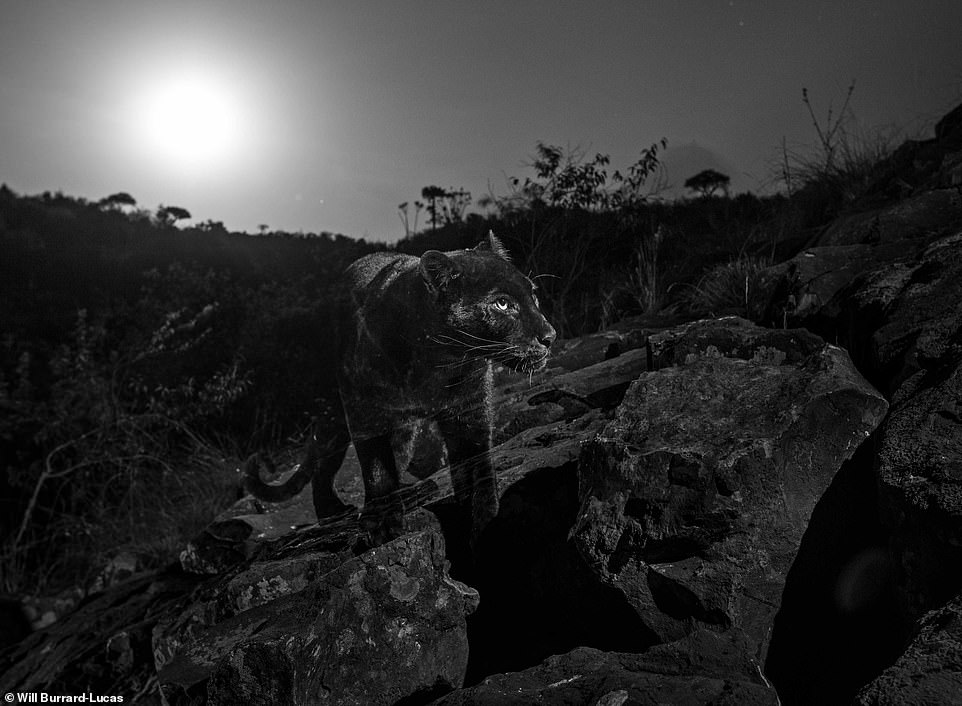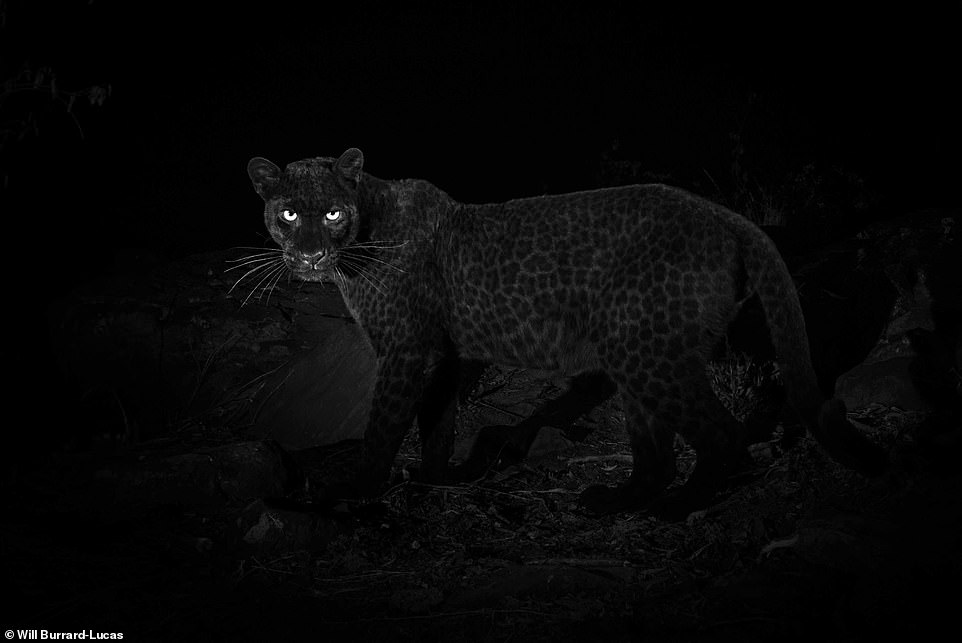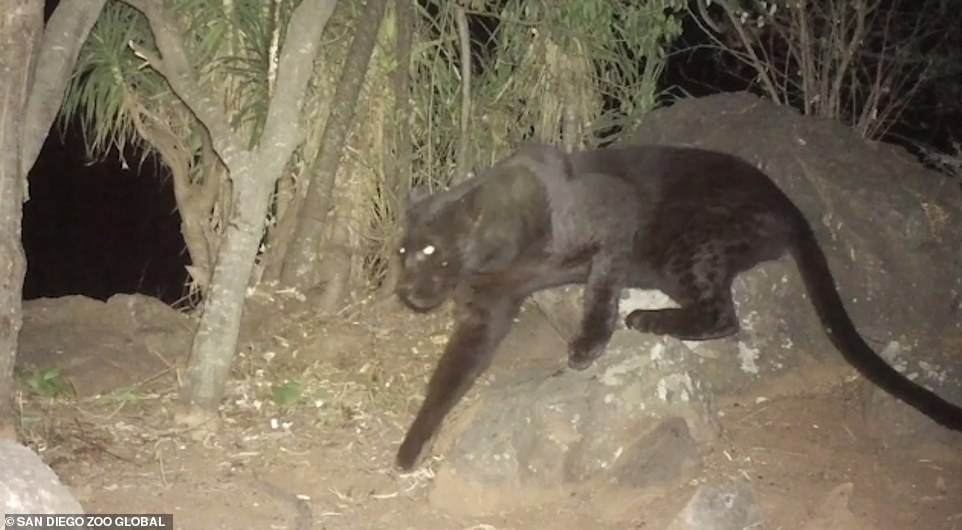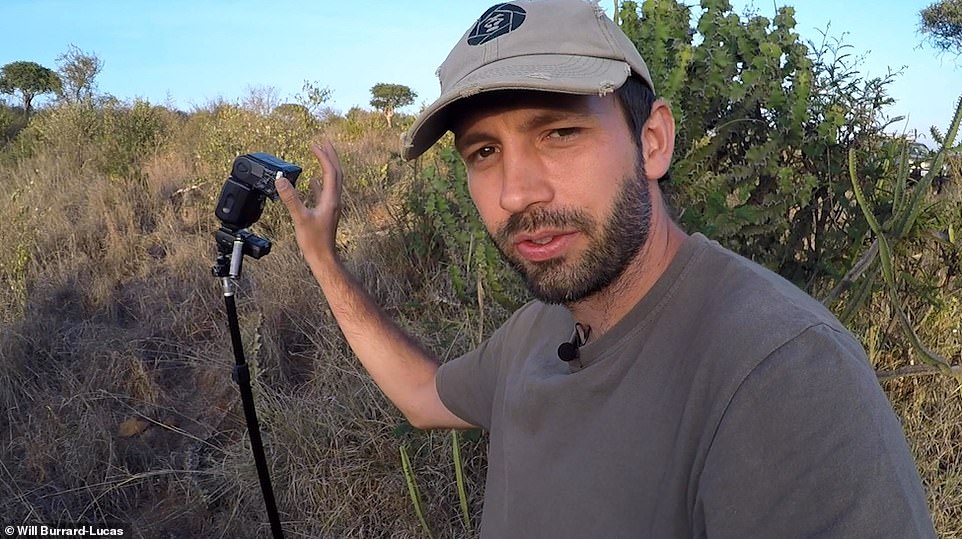nivek
As Above So Below
Ultra-rare black leopard is photographed for the first time in 100 YEARS in Africa
Slinking through the darkness, these stunning images show an ultra-rare black leopard in action.
The creature - which almost has a mythical status - was captured by British wildlife photographer Will Burrard-Lucas, 35, while it was prowling around Laikipia Wilderness Camp in Kenya in the dead of night with a full moon looming above.
This is the first time that one has been caught on camera 'properly' in Africa for 100 years.


Its wide eyes can be seen looking eagerly for prey, while leopard-like spots can vaguely be seen on its sooty coat, which is the result of melanism.
This genetic variation, the opposite of albinism, results in an excess of dark pigmentation.
Burrard-Lucas told MailOnline Travel that it had been his dream to photograph the black leopard since childhood.
After learning that several had been spotted in the Laikipia area of Kenya - the only area thought to have black leopards in all of Africa - he decided to investigate further and set up an expedition this January.

Working in collaboration with biologists from San Diego Zoo in the area, Burrard-Lucas went about installing camera traps in a well-protected area where the black leopard was rumoured to frequent.
He used specialist equipment including wireless motion sensors, high-quality DSLR cameras and two to three flashes.
The Brit said he couldn't believe it when he returned to one of the traps one day and saw a black leopard staring back at the camera lens.
In a video documenting his photography expedition, Burrard-Lucas explains: ‘As far as I know none of these leopards has never been photographed properly in Africa before... So I’ve left the cameras for a few days and now I’m heading back to see if I’ve got anything.’
While checking his equipment, the photographer continues: ‘Scrub hare, mongoose… we have something. All I can see is eyes but this is a black leopard emerging from the darkness. Look at this!
‘I can’t believe it really. I think when I started this project I didn’t actually think I was going to be able to achieve a shot of a black leopard in Africa but that it is exactly what is here on the back of my camera. Just the most stunning, spectacular creature I think I’ve ever photographed!’
He added on his blog: 'I peered at the photograph in incomprehension. I couldn't believe it and it took a few days before it sank in that I had achieved my dream.'



Burrard-Lucas was helped out in the field by Nicholas Pilfold PhD, a biologist with San Diego Zoo Global, who is currently researching leopards at Laikipia's Loisaba Conservancy and who captured the black leopard on video over a period of a year.
He confirmed that the recent on-camera sightings were extremely rare.
He explained: 'We had always heard about black leopard living in this region, but the stories were absent of high quality footage that could confirm their existence.
'This is what Will's photos and the videos on our remote cameras now prove, and are exceptionally rare in their detail and insight.



Slinking through the darkness, these stunning images show an ultra-rare black leopard in action.
The creature - which almost has a mythical status - was captured by British wildlife photographer Will Burrard-Lucas, 35, while it was prowling around Laikipia Wilderness Camp in Kenya in the dead of night with a full moon looming above.
This is the first time that one has been caught on camera 'properly' in Africa for 100 years.


Its wide eyes can be seen looking eagerly for prey, while leopard-like spots can vaguely be seen on its sooty coat, which is the result of melanism.
This genetic variation, the opposite of albinism, results in an excess of dark pigmentation.
Burrard-Lucas told MailOnline Travel that it had been his dream to photograph the black leopard since childhood.
After learning that several had been spotted in the Laikipia area of Kenya - the only area thought to have black leopards in all of Africa - he decided to investigate further and set up an expedition this January.

Working in collaboration with biologists from San Diego Zoo in the area, Burrard-Lucas went about installing camera traps in a well-protected area where the black leopard was rumoured to frequent.
He used specialist equipment including wireless motion sensors, high-quality DSLR cameras and two to three flashes.
The Brit said he couldn't believe it when he returned to one of the traps one day and saw a black leopard staring back at the camera lens.
In a video documenting his photography expedition, Burrard-Lucas explains: ‘As far as I know none of these leopards has never been photographed properly in Africa before... So I’ve left the cameras for a few days and now I’m heading back to see if I’ve got anything.’
While checking his equipment, the photographer continues: ‘Scrub hare, mongoose… we have something. All I can see is eyes but this is a black leopard emerging from the darkness. Look at this!
‘I can’t believe it really. I think when I started this project I didn’t actually think I was going to be able to achieve a shot of a black leopard in Africa but that it is exactly what is here on the back of my camera. Just the most stunning, spectacular creature I think I’ve ever photographed!’
He added on his blog: 'I peered at the photograph in incomprehension. I couldn't believe it and it took a few days before it sank in that I had achieved my dream.'



Burrard-Lucas was helped out in the field by Nicholas Pilfold PhD, a biologist with San Diego Zoo Global, who is currently researching leopards at Laikipia's Loisaba Conservancy and who captured the black leopard on video over a period of a year.
He confirmed that the recent on-camera sightings were extremely rare.
He explained: 'We had always heard about black leopard living in this region, but the stories were absent of high quality footage that could confirm their existence.
'This is what Will's photos and the videos on our remote cameras now prove, and are exceptionally rare in their detail and insight.



